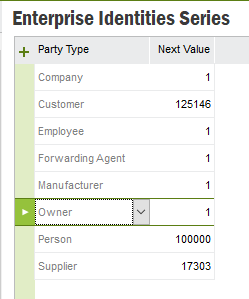Morning everyone!
I’m part of a company that’s currently in-process developing our IFS solution, and as the data admin I’ve run into a particular problem that I’m hoping someone might be able to advise me on. As part of workshops we’ve been told by the IFS consultants that we should be using the logical unit IDs as a functional part of the workflow processes. For example, a part number could be used as a reference across multiple parts of the business, having to do with inventory, shipping, R&D, etc…
As the data admin, I’m a little concerned about this. I’d like to list a few things I’ve noticed during this process that led me to my concern. Please correct me if I’m wrong, because these are only my current understandings, and I could be mistaken!
1 - The IDs for at least some objects can’t be (or shouldn’t be) defaulted. Using Parts as an example, a user would be asked to enter the part number they wish to use when creating the master part record. There’s no way to inject a default or system-generated ID if that particular part of the system doesn’t already use a default. Is my understanding of this correct?
2 - Because a BeforeInsert trigger won’t allow you to modify the record fields, I can’t correct the ID before it’s added to the table. I could perhaps run validation and simply refuse the record, but other than throwing errors I can’t assist the user. Again, is my understanding of this correct?
3 - Even though IFS has object identities it uses behind the scenes to ensure record uniqueness, the ID the user is entering is being treated as a proper ID. That means I can’t change the ID once it’s been inserted, except for removing the record.
With those three points, I’m cautious about using the ID as a functional field. If I can’t default it, validate it, or fix it after manual user entry, I just can’t rely on it being right, and if I don’t plan for user error, I know I’ll end up regretting it further down the line.
Please let me know if I’m thinking about this correctly. I’d like to trust the IFS consultants’ advice here, but I see red flags and I want to be sure.
-J Fox







